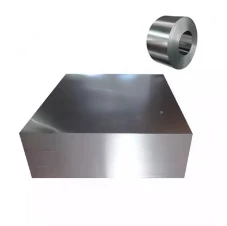
10 月 . 14, 2024 03:16 Back to list
Galvanized Steel C Channels Manufacturer for Various Sizes and Applications
Understanding Galvanized Strut Steel GI C Iron Channel Sizes and Their Manufacturers
In the construction and fabrication industries, the choice of materials plays a crucial role in ensuring the durability and reliability of structures. Among the various materials available, galvanized strut steel, specifically GI C iron channels, have gained significant popularity. This article aims to enlighten readers about the characteristics, sizes, and manufacturers of galvanized strut steel GI C iron channels.
What is Galvanized Strut Steel?
Galvanized strut steel is a type of steel that has been coated with a protective layer of zinc, providing enhanced resistance to corrosion and rust. The galvanization process involves dipping the steel in molten zinc, creating a durable barrier that prolongs the life of the material even in harsh environments. This property makes galvanized strut steel particularly valuable in a variety of applications, including construction, HVAC systems, and electrical installations.
Understanding GI C Iron Channels
GI C iron channels are steel channels with a cross-section resembling the letter C. Their design allows for a significant amount of load-bearing capacity, making them ideal for various structural applications. These channels are commonly used to support overhead structures, railings, and electrical conduit systems. The GI in GI C iron channels refers to the galvanized iron, which indicates that the channels have undergone the galvanization process for added protection.
Sizes of GI C Iron Channels
The sizes of GI C iron channels can vary significantly based on the requirements of a project. Typically, these channels are available in various dimensions, ranging from small sections for light-duty applications to larger sections for heavy-duty uses. The sizes are generally indicated by their depth and width, such as 50mm x 25mm, 100mm x 50mm, and so on. Additionally, the thickness of the steel also plays a critical role in determining the channel’s load capacity and must be chosen according to the specific requirements of an application.
Manufacturers often provide a comprehensive chart of the available sizes, which can help engineers and builders select the appropriate channel for their needs. When specifying sizes, it is essential to consider both the height and weight of the load that the channel will support.
Key Benefits of Using Galvanized Strut Steel GI C Iron Channels
1. Corrosion Resistance The galvanization process significantly improves the longevity of the material by protecting it from environmental factors that cause rust and corrosion.
2. Versatility The variety of sizes and strengths allows for a wide range of applications, making GI C iron channels suitable for different industries.
galvanized strut steel gi c iron channel size manufacturer

3. Ease of Installation These channels are designed for easy installation, often featuring pre-drilled holes for quick fastening and assembly.
Choosing the Right Manufacturer
When selecting a manufacturer for galvanized strut steel GI C iron channels, several factors should be taken into consideration
1. Quality Assurance Look for manufacturers who adhere to stringent quality control standards and provide certifications for their products.
2. Range of Products A good manufacturer should offer a variety of sizes and types to ensure you can find the right solution for your specific needs.
3. Reputation Research the manufacturer’s reputation within the industry. Customer reviews and testimonials can offer valuable insights.
4. After-Sales Support Opt for manufacturers who provide excellent customer service and support, including assistance with product selection and delivery.
5. Pricing While it’s important to find competitively priced products, be wary of extremely low prices that may indicate inferior quality.
Conclusion
Galvanized strut steel GI C iron channels represent a reliable and versatile choice for structural applications. Understanding the sizes available and selecting a reputable manufacturer can ensure that your project benefits from the durability and performance that these materials offer. With their corrosion resistance and broad applicability, these channels are an excellent investment for anyone involved in construction or fabrication.
-
Galvanized steel sheet price hot-dip galvanized
NewsMar.07,2025
-
Galvanized steel sheet price hot-dip galvanized
NewsMar.07,2025
-
Galvanized steel sheet price hot-dip galvanized
NewsMar.07,2025
-
Galvanized steel sheet price hot-dip galvanized
NewsMar.07,2025
-
Galvanized steel sheet price hot-dip galvanized
NewsMar.07,2025
-
buy corrugated roof sheet end capping
NewsMar.07,2025